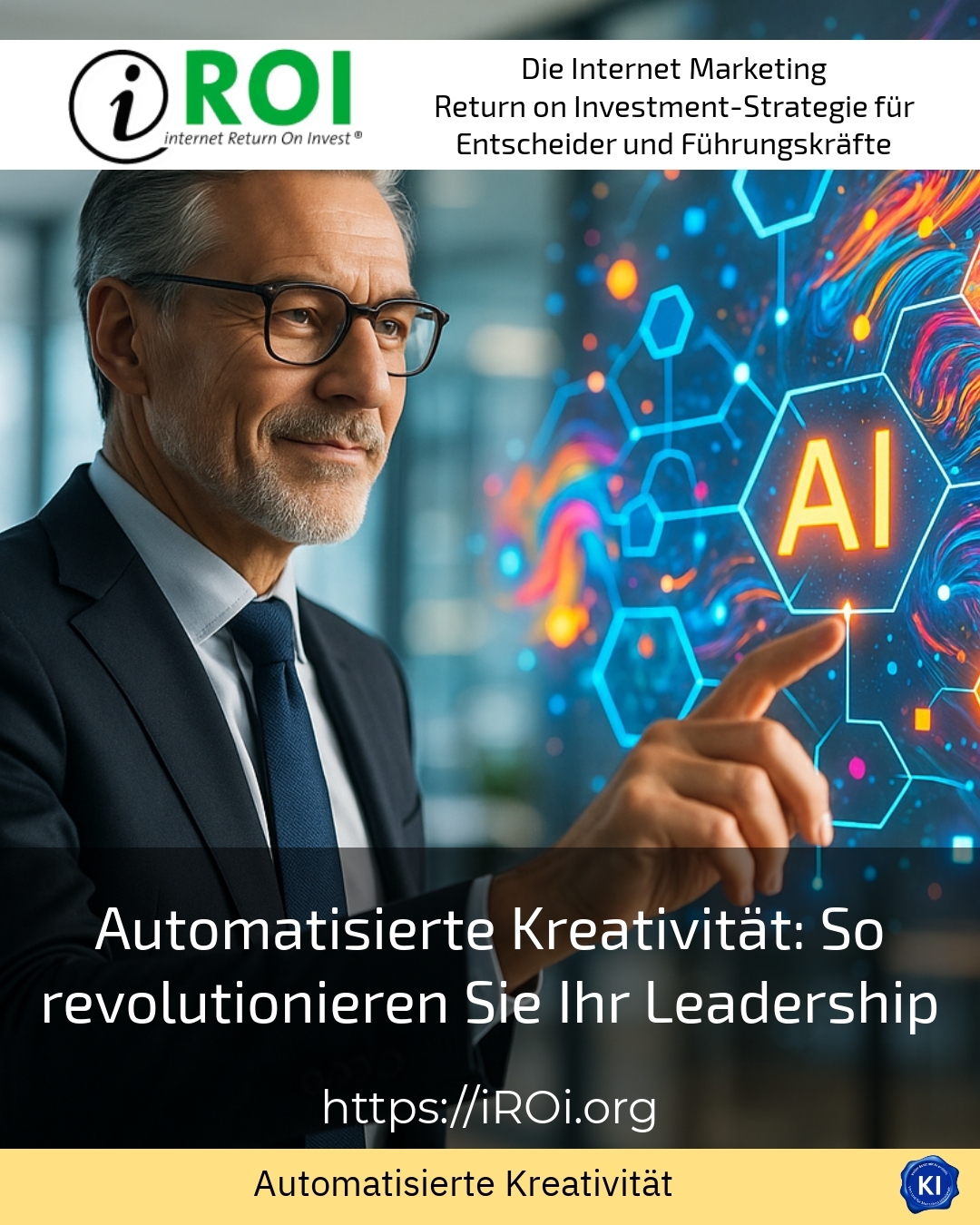In today's dynamic business world, the Automated creativity The role of leadership is becoming increasingly important in order to take leadership to a new level. Managers are faced with the challenge of promoting innovation and efficiency in equal measure. The intelligent integration of automation and creative processes creates new opportunities to better support teams and achieve corporate goals more sustainably.
Automated creativity as a driving force for modern leadership
The traditional idea of leadership as an authoritarian instrument of control has changed. Nowadays, the focus is increasingly on promoting creativity, cooperation and personal responsibility. It is precisely here that the Automated creativity new potential. By integrating intelligent systems, repetitive creative tasks can be relieved, giving managers and teams more room for strategic and innovative thinking.
For example, an international marketing company uses AI-supported tools that automatically generate variants of advertising texts and designs. This allows the creative team to react more quickly to customer feedback and at the same time focus on developing new types of campaigns. Another example is a product design start-up that uses AI to automate material and shape suggestions based on sustainability criteria. This gives the team more time for conceptualising and testing innovative prototypes.
Automated creativity also supports software development with tools that automatically suggest code snippets or user interfaces, which shortens development cycles and minimises time-consuming routine activities.
How automated creativity motivates teams and relieves managers
Managers often report that the use of automated creativity frees up time that they can invest in the individual development of their employees. For example, a manager in a medium-sized company that is active in the field of innovative technologies can double their coaching time because AI-based tools independently create suggestions for development programmes and learning modules.
Another practical example comes from the personnel services industry, where automated systems help to generate creative solutions to complex customer requirements. This leads to faster decision-making processes and higher customer satisfaction, while the leadership team can focus on strategic development.
Certain companies in the media industry are using AI to automatically perform routine creative tasks such as laying out social media posts or creating video variants. This frees up managers to specifically promote their team's creative talents and drive cultural innovation.
BEST PRACTICE with one customer (name hidden due to NDA contract) The client from the consumer goods sector relies on automated creativity accompanied by iROI coaching, in which AI-supported systems deliver product ideas and advertising content. This allows managers to focus more on the individual development of their teams and establish a culture of personal initiative and continuous learning.
Strategies for the successful integration of automated creativity in leadership
For automated creativity to truly enrich leadership, a conscious approach is required. Managers should fully understand the possibilities of automation and utilise them in a targeted manner to expand their leadership skills. It is important to continue to put people at the centre and view AI as a complementary tool.
The following tips have proved effective in practice:
- Regular training in the field of digital and creative technologies in order to correctly recognise automation potential.
- Promoting an open corporate culture in which employees are encouraged to contribute their creative ideas and scrutinise AI-supported solutions.
- Partnerships with specialised coaches, such as iROI-Coaching, who support the monitoring and implementation of automation projects.
- Implementation of pilot projects for automated creativity in order to gather experience and define success criteria.
- Transparent communication about which tasks are being automated and how this benefits individual development and team dynamics.
One software company, for example, relied on the introduction of an intelligent assistant for content creation, accompanied by expert coaching. The managers reported that this support made the team more motivated and productive because the focus shifted from pure command to creative co-design.
Practical examples from various industries
Consulting firms have used Automated Creativity to combine data analyses with automated reporting. This allows consultants to invest more time in developing customised solutions. In the creative industry, AI-driven tools relieve the design team of routine tasks and encourage the exploration of new visual concepts. And in the education sector, automated creativity helps to create personalised learning paths, allowing educators to better focus their attention on encouraging student motivation.
My analysis
The Automated creativity offers managers and teams valuable support in organising complex creative processes more efficiently. It creates scope for strategic and innovative leadership, promotes employee motivation and accelerates innovation cycles. It is crucial that human leadership and automated systems complement each other's strengths. In this way, leadership can be redefined and sustainably improved in the digitalised world of work.
Further links from the text above:
The new definition of leadership - Digitales Institut
AI and leadership: How AI is changing leadership - Tivian
Creativity - Definition - Gabler Wirtschaftslexikon
The new hierarchy of creation: creativity leads, the machine follows - Quantum Beyond
Six formats for more creativity in your company - INQA.de
For more information and if you have any questions, please contact Contact us or read more blog posts on the topic internet Return on Investment - Marketing here.















